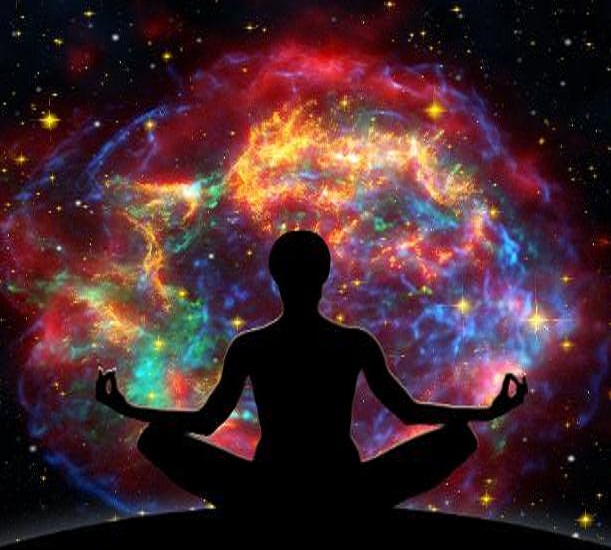Spaceflight And Spirituality, A Complex Relationship. Buzz Aldrin and Neil Armstrong had been on the moon for less than an hour when the radio blackout began. After a grueling four-day journey from Earth, NASA wanted the two astronauts to rest for a few hours before they exited the lunar module to make humanity’s “great leap.” But just before the blackout, Aldrin asked his listeners 250,000 miles away “to give thanks in his or her own way” for the safe landing. It wasn’t his first choice of words, but it’d have to do.
In the weeks leading up to the Apollo 11 mission, Aldrin had met with his pastor at the Webster Presbyterian Church in Houston to help him choose a symbolic act to christen the moon landing. Although Aldrin initially wanted to do something patriotic, he eventually settled on an act of faith: taking communion. In this respect, Aldrin would be following in the footsteps of generations of European explorers who believed it was the grace of God that enabled their exploration and conquest of the “new world.”
It was Deke Slayton, one of the original Mercury astronauts who ran the Apollo crew operations, who implored Aldrin to keep his public comments “more general.” But what Aldrin did in private was his own business; so shortly after the start of the radio blackout, he opened the plastic packages containing a wafer and a thimbleful of wine. As Armstrong looked on, Aldrin read a passage from the Gospel of John he had written on an index card: “I am the vine, you are the branches. Whoever abides in me will bring forth much fruit. Apart from me you can do nothing.”
The figure of the righteous protestant astronaut was epitomized in John Glenn, the first American to orbit Earth as part of NASA’s Mercury program, who frequently invoked his religious commitments at press conferences. Indeed, as Tom Wolfe noted in The Right Stuff, “the fact that they were all white and all protestant seemed to be interpreted as a wholly benign evidence of their Small-Town American virtues.” Although the Mercury program may have set the stage for a Christian astronaut corps, this legacy was cemented during the Apollo era due in large part to a NASA scientist named John Stout.
Stout was a Presbyterian missionary and university science teacher who began working at NASA in 1964. As part of the terms of his employment, Stout asked NASA to allow him to continue his work with the church as a chaplain at the agency. During the course of his duties as a NASA chaplain, Stout grew close to Ed White, the first American to perform a spacewalk. White had carried three religious artifacts with him on that walk—a star of David, a crucifix, and a Saint Christopher medallion—and had expressed a desire to one day carry a Bible to the moon.
In 1967, White and two other astronauts died when a fire broke out on the launch pad while they were inside the Apollo 1 capsule. Shortly thereafter, Stout founded the Apollo Prayer League with the explicit goal of fulfilling White’s dream of landing a Bible on the moon. The organization’s membership ballooned after the astronauts on Apollo 8 read passages from the book of Genesis over the radio during their trip around the moon. This act also provoked the ire of Madalyn O’Hair, an atheist activist who had successfully banned Bible reading in public schools only a few years before. Following the Apollo 8 Genesis reading and news of Aldrin’s communion on the moon, O’Hair sued NASA to prevent religious readings by astronauts in space, on the grounds that it was “slandering other religions [and] slandering those persons who do not accept religion.”
The first microform copy of the Bible flew on Apollo 12 but never made it to the lunar surface: It was accidentally stowed in the command module rather than the lunar lander. A second attempt was made during the Apollo 13 mission, which carried 512 copies of the microform Bible on its journey to the moon with the intention of leaving one on the lunar surface. These Bibles never made it to the moon either, because the landing attempt was aborted. The Apollo Prayer League finally had its day when Apollo 14 astronaut Edgar Mitchell carried 100 microform Bibles to the surface of the moon and returned them to Earth.
The separation of church and state is enshrined in America’s founding documents, but nevertheless the two have always had an intimate relationship. God is invoked on US currency and in our pledge of allegiance. Every American president has had ties to a protestant or Catholic church. America’s duty to God justified its westward expansion, as well as its entry into every war it’s ever fought. It’s hardly surprising, then, that God found its way into the American space program as well. But were the religious dimensions of the Apollo program just another way to justify the massive expenditures of the country’s Cold War military machine, or is there something about spaceflight itself that evokes spirituality?
As historian Kendrick Oliver has noted, there was certainly a pervasive sense of a Christian mission throughout the ranks of NASA employees working on Apollo, but there’s little evidence that NASA administrator James Webb and other agency leaders saw it as a religiously motivated mission. At the same time, however, the experience of the Apollo astronauts did expose them to “a progressive series of almost entirely original perspectives, including distant views of the whole earth, vistas that declared the infinite depths of the universe, and panoramas of the haunting landscape of the moon.” Thus, the question on many people’s minds when the astronauts returned was whether the experience had changed them. After all, they had experienced a view that throughout human history was reserved for the gods.
As Oliver recounts in To Touch the Face of God: The Sacred, the Profane, and the American Space Program, many of the Apollo astronauts had little time to reflect on the profundity of their experience while they were on the moon. Most were preoccupied with the details of the mission and simply staying alive in the uniquely hostile environment. Yet a handful of the astronauts did report feelings of divinity while on the moon. Mitchell, for one, reported a feeling of “universal connectedness,” and Apollo 15 astronaut James Irwin said he felt God all around him. Indeed, Irwin was so overcome by his experience on the lunar surface that he asked his colleague David Scott if they could hold a religious service atop some nearby hills before they departed from the moon. Scott ultimately shot down this request, so Irwin made do by quoting Psalm 121: “I will lift up mine eyes unto the hills, from whence cometh my help.” This experience, Irwin later reported, was “the beginning of some sort of deep change taking place inside me” marked by a profound belief in the power of God.
In 1987, the author Frank White gave the quasi-religious experience of seeing Earth from space a name. He called it the overview effect. Unlike the explicitly Christian experiences of the Apollo astronauts, the overview effect is more of a spiritual phenomenon that is disconnected from any specific religious connotations. It is marked by a perception of the connectedness of all things and an appreciation of the fragility of life. In the 30 years since the term was coined, astronauts have repeatedly reported experiencing the overview effect from the International Space Station.
While the shift from an explicitly Christian framing of space exploration to a more inclusive spiritual outlook is important, there’s still the unavoidable fact that only a few hundred people in history have ever had the opportunity to experience it. Unlike religion, which is accessible to everyone regardless of their station in life, space exploration is an option for only a small minority of highly trained individuals. Even if Elon Musk does succeed in building a colony on Mars, this is still only a small fraction of humanity that will be able to tap into the sublime through spaceflight.










